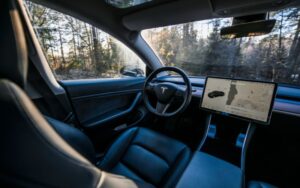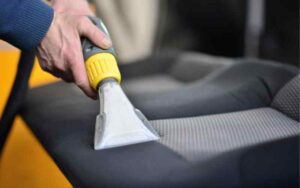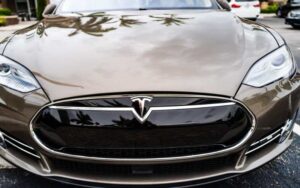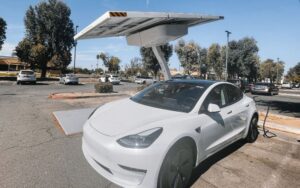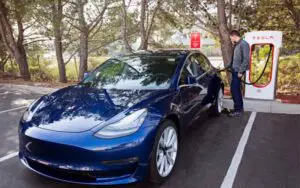Tesla Cabin Overheat Protection Battery Drain! (Reasons & Solutions)
Last updated on April 18th, 2023 at 11:17 pm
The Cabin Overheat Protection is an indispensable feature that comes with many models of Tesla.
However, it becomes a huge dilemma when this exceptional feature begins to do more harm than good by draining your vehicle’s battery.
What could be responsible for this abrupt change and the possible solution?
The Tesla Cabin Overheat Protection Battery Drain is caused by improper charging habits, wrong settings, and Sentry Mode activation. Even though the Cabin Overheat Protection is a great climate control feature that helps keep your car’s interior at a comfortable temperature when it exceeds 105°F.
This article will cover the reasons and possible solutions for the Tesla Cabin Overheat Protection. Have an exciting read!
How Does Tesla Cabin Overheat Protection Work?
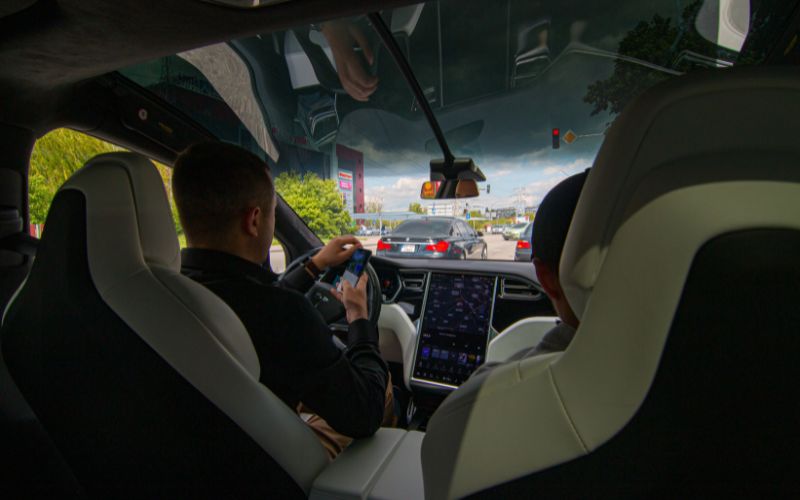
The Tesla Cabin Overheat Protection uses the car’s air conditioning (AC) system to cool its Cabin.
This feature gets to work once the car temperature exceeds 105°F. It immediately turns on the AC to cool the Cabin down.
This feature is most useful in hot weather conditions as it prevents the Cabin from getting too hot, affecting the electronics.
In addition, the Tesla Cabin Overheat Protection feature helps to extend the car’s range in extreme heat conditions.
This extension minimizes the energy needed to cool the Cabin while on the go.
Whenever the Cabin Overheat feature is triggered, you’ll receive a notification on your Tesla app: “Your Cabin Overheat Protection has been turned on.”
Why Does Tesla Cabin Overheat Protection Drain the Battery (Give Reasons With Solutions)?
The Tesla Cabin Overheat Protection highly consumes batteries, resulting in battery drainage if the system doesn’t sleep after 12 hours.
Discuss seven major reasons for this battery drainage problem and possible solutions.
#1. Wrong Setting
Some drivers have suggested that the car battery drains faster than usual, leading to damage in worse-case scenarios, which could be because the Cabin Overheat Protection setting isn’t correct.
This safety feature is designed to be used only in direct sunlight exposure or high temperatures resulting from greenhouse gas emissions.
In such a case, the best solution is to turn on the feature rather than worry about the battery.
Solution:
To avoid unnecessary battery drain, you can set it to “No A/C .”Then, it’ll only use the fan, not the air conditioning unit.
That way, when you activate the Cabin Overheat Protection, it won’t affect the battery because it’ll consume less power.
In extreme cases, you’ll need to replace your battery with a newer model.
#2. Settings Not Disabled
Aside from the Cabin Overheat Protection, Tesla has other technological components that are always running.
A ‘vampire battery drain’ can occur when all these components run simultaneously. This mostly happens when the Overheat Protection, lights, motor, and computer system are on.
With this drain, you can lose about 1-5 miles per day of your driving range.
Solution:
The easiest way to stop this problem is to disable the features that aren’t in use. Allow only the most important ones to run.
#3. Wrong Charging Habits
Using the Tesla Cabin Overheat Protection feature will drain when you haven’t charged your battery properly.
Whether you undercharge or overcharge the battery, it’ll still result in battery drain.
Solution:
If you’re a Tesla owner experiencing this issue, endeavor to charge your car battery in a more regular pattern.
Never leave them plugged into the power source overnight. Also, avoid charging the battery with an outlet converter or power strip. That will help to prevent heat buildup.
#4. Idling Application Usage
Allowing 3rd party apps on your car’s computer system to run while the Cabin Overheat Protection is on causes battery drainage.
Solution:
Once you’re done with the apps, close them. Leaving them will ignite more Vampire battery drain, even when you turn off the car.
#5. Sentry Mode Activation
Sentry mode is a safety feature in Tesla cars that allow you to monitor any suspicious activity around your vehicle when you’re not there.
It covers what’s happening outside and around the car. Unfortunately, even though it’s a helpful feature, when you leave it on, it causes another problem.
Activating this mode simultaneously with the Cabin Overheat Protection causes the battery to drain.
Solution:
The best way to avoid the battery drainage problem is to turn on one of the features at a time. Immediately, it is done serving its purpose; turn it off.
If you must use the two features simultaneously, turn on the energy savings mode on your Tesla.
It’ll help reduce the power that goes out of your car’s battery but make you drive at a more reduced speed.
#6. Smart Summon Mode
This feature acts as an autopilot capability that allows you to call your car to your location.
Like the Sentry Mode, this feature drains the battery when enabled at the time with the Overheat Protection.
When you leave this feature activated always, it’ll continuously drain the battery, even when the car is parked.
Solution: ‘
Always turn this feature off and activate it only when you need to use it.
There’s no other right time to turn on the Overheat Protection than during the hot hours. That way, you’ll save your battery life.
#7. Smart Preconditioning Always On
This climate control feature causes the car battery to work harder while the car is still in use, providing very little benefit.
Solution:
It’s highly recommended that you always turn off Smart Preconditioning to preserve your battery life.
The table below summarizes the reasons and solutions for the Tesla Cabin Overheat Protection battery drain.
| Reasons | Solutions |
|---|---|
| Wrong setting | Always leave the settings on ‘no A/C’ until the temperature increases. |
| Settings not disabled | Always disable all features in your Tesla car that you’re not using. |
| Improper charging habits | Avoid charging your battery with a power strip or outlet converter. |
How Much Does a Tesla Battery Replacement Cost?
Tesla batteries are quite expensive. Depending on the weather, your location, and how often you drive, you’ll need to replace your car battery every 8 to 10 years.
The cost of the battery replacement is determined by the current state of the battery and its size.
Vehicle mode is also a determinant. The estimated range of each battery back before a replacement is between 100,000 to 150,000 miles.
Depending on the model of your Tesla car, the cost of battery replacement is between $10,000 to $20,000.
Does the Tesla Battery Drain When Not In Use?
Tesla’s battery drain is an issue of great concern. Unfortunately, the battery also drains when not in use.
When that happens, it is called a vampire battery drain. This drainage results in the loss of some miles of driving range per day when the car is idle or parked.
The major problem is that Tesla’s batteries do not last as long as they should. The design flaw in the battery pack is also another reason for the fast battery drain.
However, Tesla is working effortlessly to improve its battery life and reduce drainage rate by adding more software updates to its cars.
How Long Should You Leave the Tesla Cabin Overheat Protection On?
The Tesla Cabin Overheat Protection can remain on for 12 hours after passengers have exited the vehicle or pending when the battery reduces to 20% charge.
Usually, the climate control system can minimize the Cabin’s temperature in very hot conditions for up to 12 hours after you exit the vehicle.
Once activated, the feature can function without an air conditioning system. In such a case, only the fan operates.
Elon Musk made an announcement saying that Tesla’s next software update will allow drivers to adjust the activation temperature of the automatic Cabin Overheat Protection feature.
Remember that your Tesla can still get extremely hot even with the Overheat Protection feature.
Whether or not you activate the Cabin Overheat Protection, avoid leaving your pets or children unattended in the vehicle.
If you must, you can use other Tesla technological features like Camp Mode or Dog Mode.
According to Elon Musk’s tweet, “the automatic Cabin Overheat Protection should make a big difference with record heat waves.”
All indications show that he was probably talking from experience.
How To Disable Tesla Cabin Overheat Protection (Step-by-Step)?
The steps to disable the Tesla Cabin Overheat Protection are quite simple.
- First, open the Tesla app.
- Go to the settings menu.
- Go to the ‘Climate’ tab.
- Swipe up to access the grey bar.
- Go to ‘Cabin Overheat Protection.
- Then, select ‘Off.’
If you’re inside your Tesla car, here’s how to turn off the Cabin Overheat Protection using the touchscreen.
- Go to ‘Controls’
- Select ‘Safety’
- Choose ‘Cabin Overheat Protection
- Then, tab ‘Off.’
Summary
Aside from the Cabin Overheat Protection, one of the major causes of the battery drain, bad charging habits, and Sentry Mode being activated also adds to the list.
Make sure to turn off the safety feature once the temperature is back to normal and close other apps when not in use.
References:

Hey, I’m Michael Davis, a 35-year-old with a degree and a love for cars and tech. Since I was a kid, cars have been my thing—so much that I even thought they ran on magic beans! Fast forward, and I’ve built Vehicle Army, your one-stop-shop for easy-to-understand car facts.


